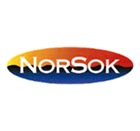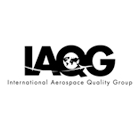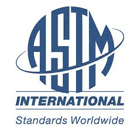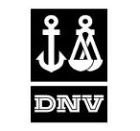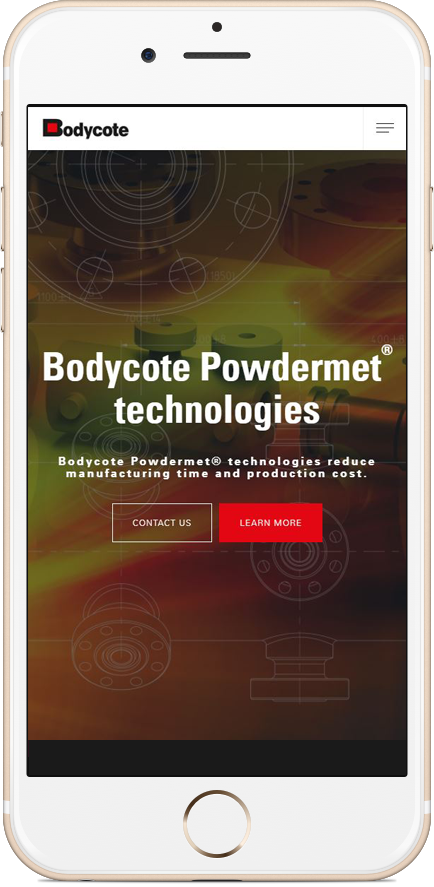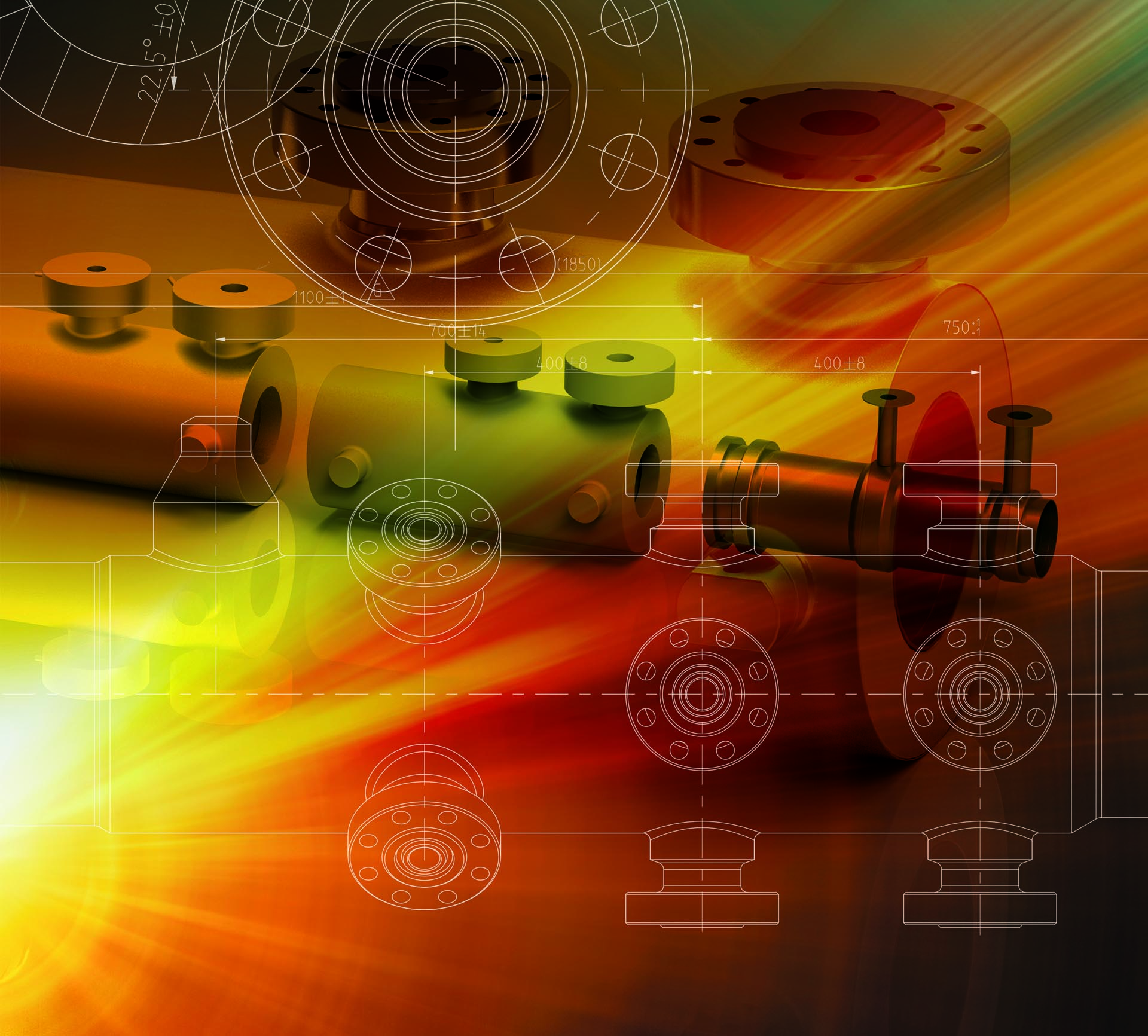
Bodycote has decades of experience creating complex, high integrity components from powdered metal. Bodycote Powdermet® technologies are a group of manufacturing processes used in the production of complex components using powder metallurgy.
Bodycote Powdermet® technologies now incorporate new, patent-pending techniques that combine 3D printing with well-established net shape and near net shape techniques. This new technology dramatically reduces the manufacturing time and production cost of a part compared to producing the same part using 3D printing alone.
Powdermet® technologies ensure complete powder consolidation, achieve structural homogeneity, and eliminate internal porosity and unconsolidated powder flaws. The process can produce components with varying surface features and thicknesses, with higher structural integrity than alternative production techniques. The need for brazing or welding parts together to form larger structures is eliminated. Instead, the finished article can be produced as one seamless component and largely avoid the size limitations imposed by the constraints of 3D printing. Different parts of a component can be formed from different alloys presenting the ideal and most cost-efficient solution. Component design can be tailored to the actual requirements for performance and not limited by subsequent machining operations.
Powdermet® technologies ensure complete powder consolidation achieving structural homogeneity and elimination of all internal porosity – characteristics which are not possible to achieve with conventional manufacturing methods. Bodycote’s innovative engineering solutions improve customers’ product design and system operations while contributing to overall savings.
Powdermet® Hybrid technologies* combine NNS or SSNS with 3D printing to produce fully bonded components at greatly reduced cost and production time compared to 3D printing alone. It is also possible to use multi-metallic structures rather than traditional techniques.
* Patents pending.
Characteristics of Powdermet® Hybrid with 3D Printing:
Powdermet® NNS technology produces components with a high degree of complexity not possible via conventional means.
Powdermet® NNS offers these benefits:
These desirable characteristics allow complex components to be manufactured with finished profiles in hard-to-machine, exotic alloys suitable in subsea, oil and gas, aerospace and marine applications.
Powdermet® 3D Printing technology combines building of three-dimensional parts layer-by-layer based on digital models with Bodycote post-build processes of heat treatment and hot isostatic pressing. This additive manufacturing technique allows the flexibility of creating complex components with unique material properties quickly and less costly compared to traditional subtractive methods.
Advantages of Powdermet® 3D Printing:
Powdermet® SSNS technology produces components which require minimal post-process machining and retain their finished machined tolerances. Powdermet® SSNS can be used to produce components that would be cost-prohibitive if manufactured by other means.
Benefits of Powdermet® SSNS:
Certain environments or applications benefit from the use of very high strength alloys. These alloys are easily incorporated into SSNS technology unlike competing casting processes. Selective surface net shape parts made from optimal alloy composition offer higher performance, extended life and repeatability in volume manufacturing. Powdermet® SSNS technology has been flight tested on aerospace applications and is well suited for oil and gas applications.
For parts that are subjected to high in-service stresses, it is essential to maximise the properties and working life of the component. The design flexibility inherent in Bodycote’s Powdermet® solutions means that it is possible to produce components from metallic compositions that are difficult or impossible to forge or cast by conventional means.
Each generation of aeronautical engines continues to improve performance and efficiency; whilst reducing emissions and weight. Critical high pressure, high temperature aerospace components can be manufactured entirely using SSNS or hybrid SSNS with 3D printed segments. Welding operations are eliminated or minimised and the ‘as built’ structure design takes advantage of Powdermet® technologies.
SSNS and NNS parts require minimal machining; so in comparison to conventional wrought components, the design can be tailored to the actual requirements for part performance, rather than limited by subsequent machining operations. In many instances, large complex components can be produced in one piece, reducing post-weld examinations and offering a cost effective manufacturing route.
Oil & gas operations require specialised equipment that must be reliable, cost-effective and safe to the environment. Powdermet® components provide integrated, highly complex parts with shorter lead times. Unlike conventionally forged billets and preforms, machining and welding are minimal. In subsea manifold systems, subcontract welding has been reduced by up to 80%.
Powdermet® 3D printing technology, particularly in high pressure, high temperature sour environments, reduces the cost of expensive materials and extends component service life. The homogeneous microstructure in Powdermet® hybrid technology increases wear and corrosion resistance in components required to meet the increasingly stringent demands of the offshore industry. Multiple large and complex components can be combined and produced as a single piece in one-off or full production operation - a cost-effective manufacturing route. Net shape features at key locations within a component eliminate the need for machining in difficult-to-access areas, enhancing performance and component life through material optimisation in critical areas.The power generation industry is constantly working to improve the efficiency of turbines and looking at new ways to manufacture components. For example, Powdermet® technology has successfully been used to produce steam chest parts in steam turbines, which have intricate internal cavities. It is the only manufacturing technique available to achieve complex internal profiles. Other application examples include rotors, turbine discs, diaphragms, valve bodies and steam generator components.
Bodycote Powdermet® technologies may use many types and grades of materials, including:
Please contact Bodycote Powdermet® technologies sales team for a full list of materials types, grades and their applications.
| TYPES | GRADES |
|---|---|
| Stainless steels |
304L 316L 316LN |
| Martensitic stainless steels |
17/4PH 13/8PH 15/5PH X4CrNiMo |
| Ni based alloys | IN625 IN690 IN713 IN718 IN728 IN925 IN939 C22 247LC Supermet 60+ Supermet 60 Supermet 50 Waspalloy |
| TYPES | GRADES |
|---|---|
| Co based alloys | Stellite 1, 3, 6, 12 and 21 |
| Titanium |
CP Ti Ti6AI4V TiAl Ti6Al2Sn4Zr2Mo |
| Aluminium |
Al-Si alloys Al6061 AlSi10Mg |
| Cobalt Chrome Molybdenum | |
| Tungsten |
